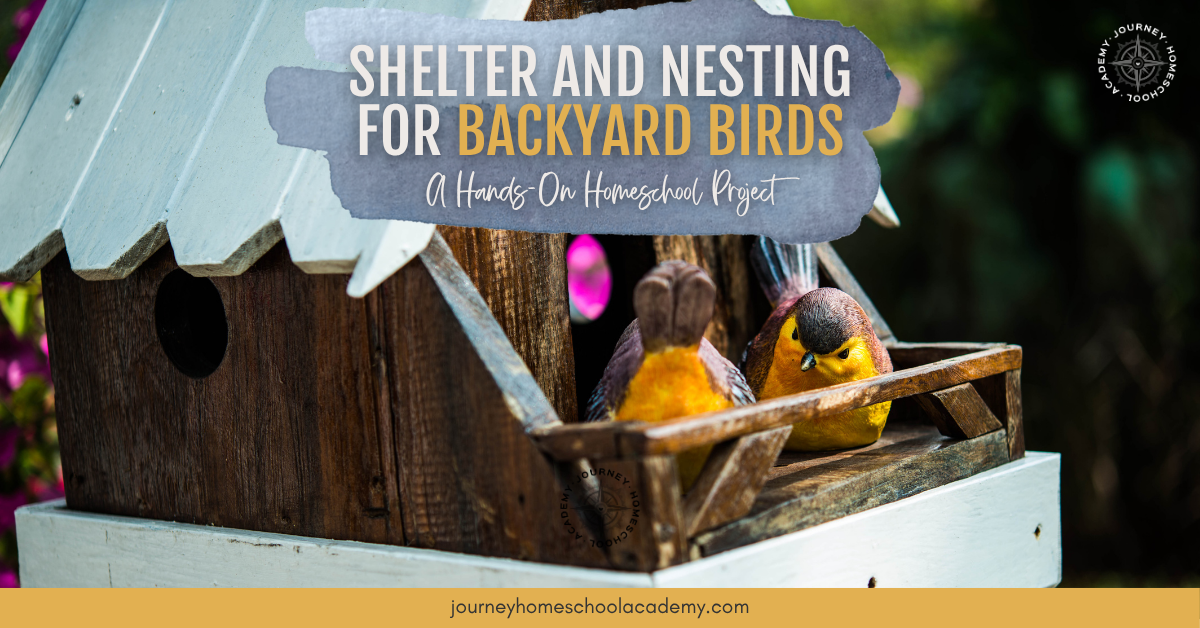If you have kids who love to drop everything the moment they spot a bird hopping across the yard, you already know how quickly a simple morning can turn into a full nature study. At my house, the moment someone sees a wren with a beak full of twigs, school plans pause and everyone rushes to the window. It is all part of the joy of learning at home.
A backyard nesting project is one of the easiest ways to create a real life science experience in your homeschool. It is inexpensive, flexible for all ages, and full of discovery. Your kids get to see birds gather materials, build carefully woven nests, and raise their young right in your own backyard. And this is exactly the kind of learning that sticks with them long after the official school day is over.
Let us walk through simple ways to create shelter, add nesting boxes, and set up an observation system that your kids will absolutely love.
Shelter and Nesting for Backyard Birds: A Hands-On Homeschool Project
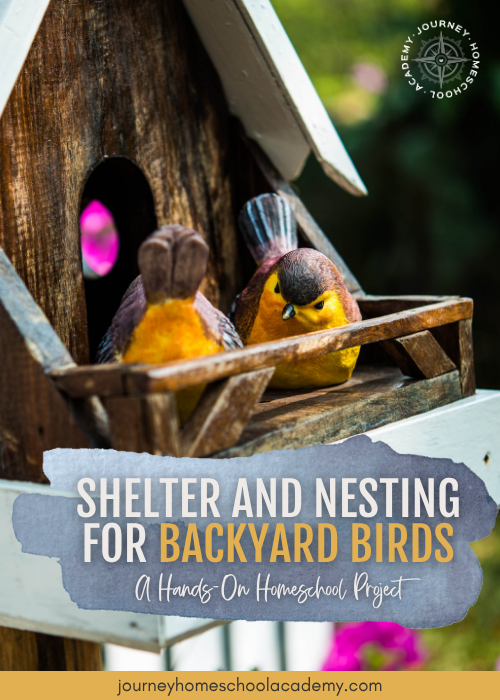
Why Bird Nesting Works So Well in a Homeschool Setting
It is meaningful science that feels like play
Instead of forcing nature study, this kind of project pulls your kids in naturally. They want to know why birds choose certain spots, why they carry certain materials, and how long it takes to build a nest. Curiosity does the teaching for you.
It works for every age level
Younger children can sketch birds, draw nest shapes, or practice their counting skills by noting how many times a bird visits the nest. Older kids can identify species, chart nest progress, or compare different nesting materials. Everyone gets something out of it, and it fits beautifully into a multi-age homeschool.
It builds gentle stewardship
Your kids step into the role of careful observers, learning how to give space, respect wildlife, and protect nesting areas. These lessons develop naturally as they interact with the birds.

Step 1
Create Natural Shelter in Your Yard
Birds need safety before they ever think about building. Here are simple ways to offer shelter that your kids can help with:
- Evergreens: Trees like cedar, spruce, and holly stay full throughout the year and offer reliable protection during storms and cold snaps.
- Dense shrubs: Shrubs such as viburnum, lilac, or dogwood give birds hidden places to nest and tuck themselves away from predators. Take a quick walk around your yard with your kids to see which shrubs already provide shelter.
- Brush piles: Instead of throwing away branches after yard cleanup, stack them neatly in a corner. Wrens and sparrows love using brush piles as shelter.
- Tall grasses: Grasses offer both hiding places and nesting materials. Your kids can explore which grasses bend, which break, and which ones birds seem to take first.
🪶For a bigger look at creating a welcoming bird habitat, see Why Create a Bird-Friendly Backyard.
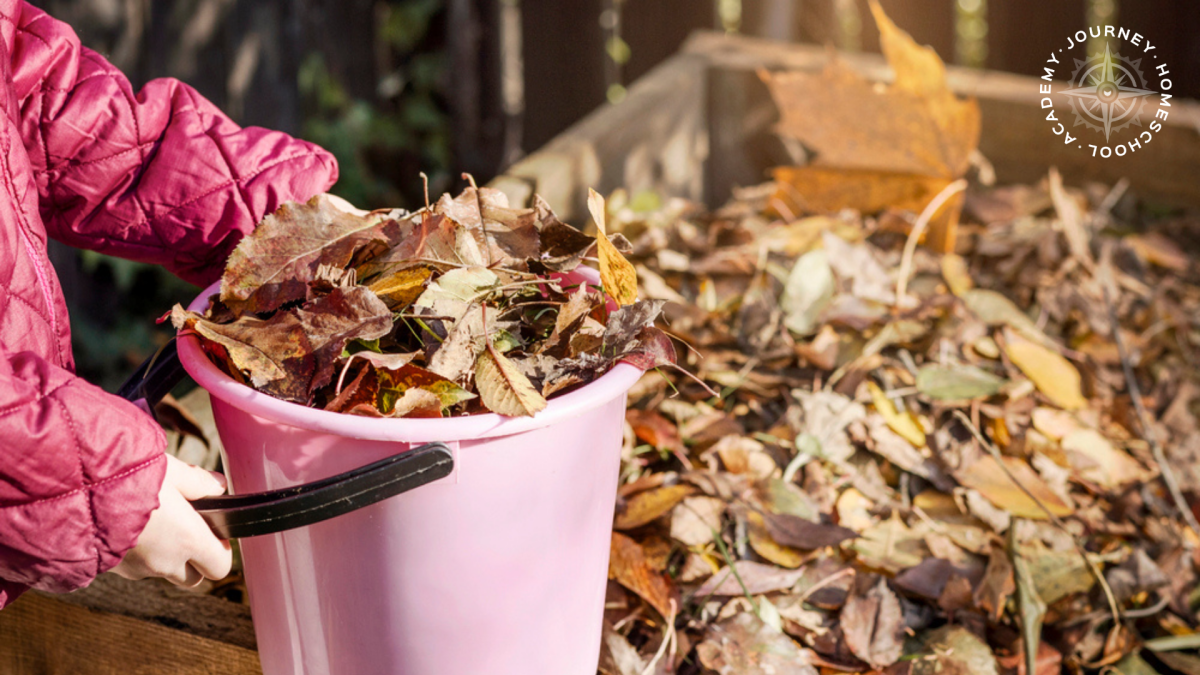
Step 2
Add Nesting Boxes to Attract Birds
Nesting boxes make it easy for your children to observe bird behavior safely.
Recommended nesting boxes:
Both options are easy to install and great for beginner backyard bird watchers.
Placement Tips
Help your kids choose safe spots by considering:
- Avoiding strong winds
- Mounting the box securely
- Keeping the box out of reach of cats and raccoons
- Placing the box away from feeders so the nesting birds are not overwhelmed by traffic
Give your kids the job of checking for the first signs of interest. That moment is always exciting.
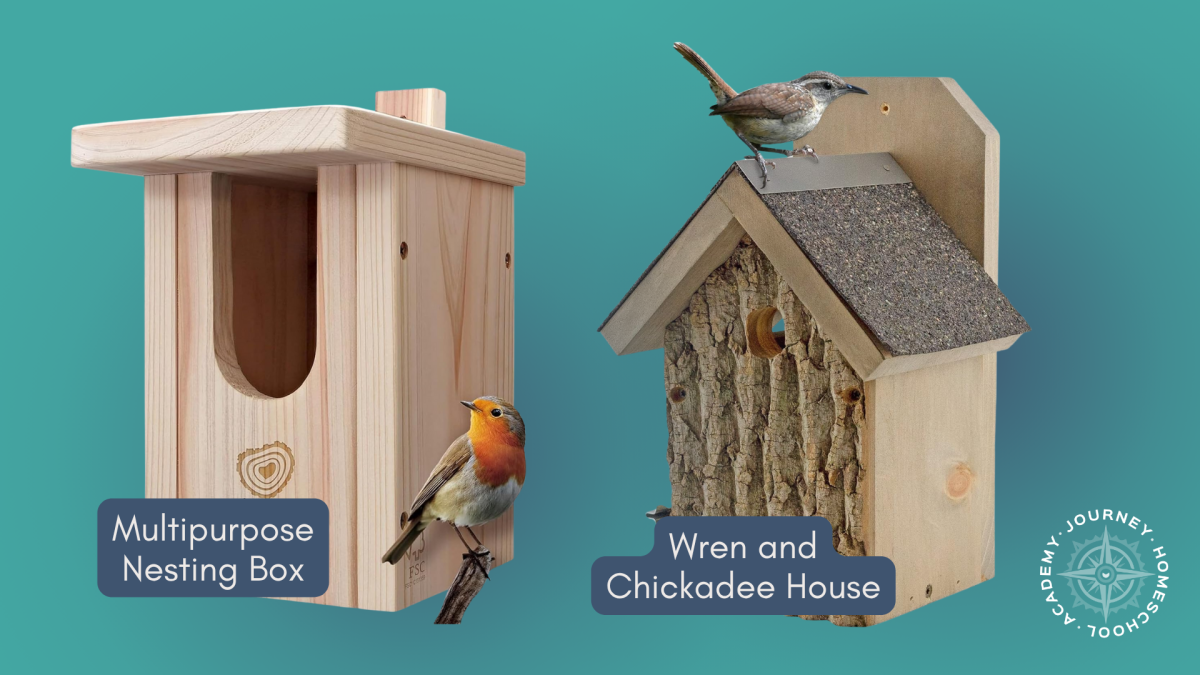
Step 3
Pay Attention to Seasonal Needs
Birds need different kinds of shelter throughout the year.
Winter shelter: Birds use evergreen cover and roosting spots to stay warm. Observing winter birds can spark great questions from kids about migration and survival.
Spring and summer nesting: This is the building season. Offer materials like:
- Twigs
- Pet fur from untreated animals
- Pine needles
- Dried grass
- Straw
Gather everything in a basket and let your kids refill it regularly. They will love checking to see which materials disappear first.
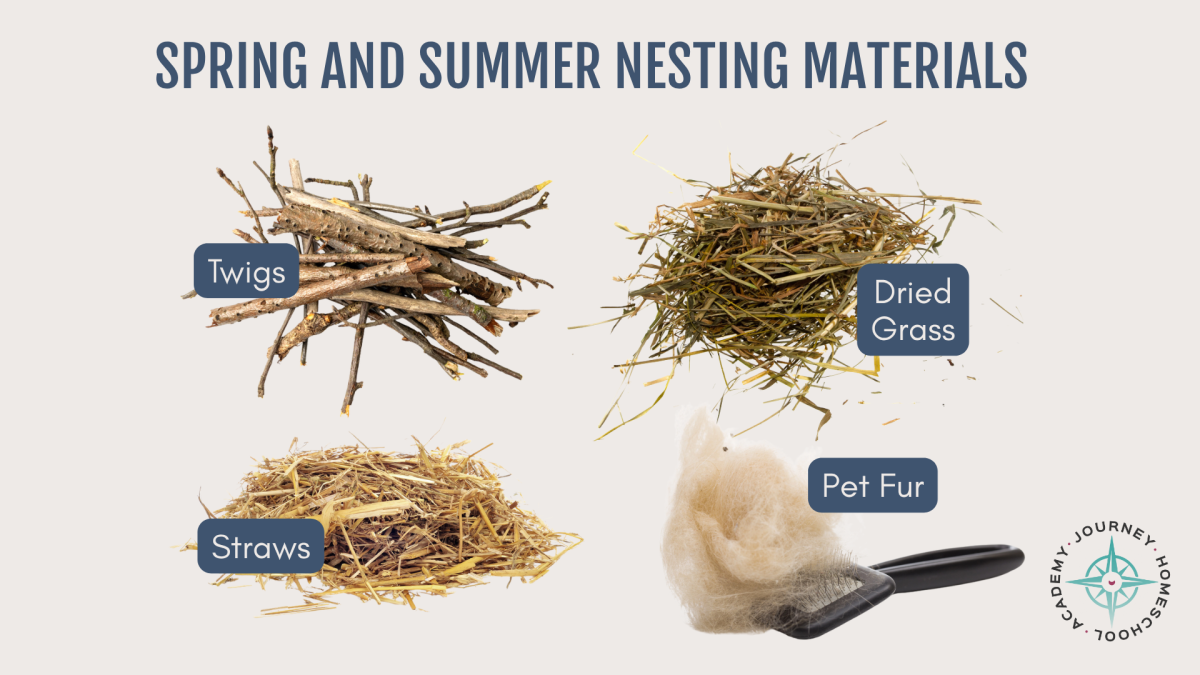
Step 4
Try Hands-On Nest Building Projects
Kids are naturally drawn to projects they can touch and build. Here are a few they can help with:
- Build a nesting platform – Use small wood pieces, twine, and twigs to create a simple base that gives birds a starting point for their nest.
- Decorate a birdhouse – Let children paint a wooden birdhouse with weather-safe paints. Even younger kids can help with sanding or design choices.
- Create a nesting material bundle – Place a variety of natural materials in a bowl or mesh bag and hang it from a tree branch. It is simple and surprisingly helpful for birds.

Step 5
Start a Backyard Bird Observation Station
This is where the project becomes a full learning experience!
- Create a bird journal. Your kids can record:
- Daily visits
- Building progress
- Weather
- Materials used
- Interesting behaviors
- Older kids can graph observations or compare species.
- Teach respectful observation.
- Explain to your kids why they need to keep distance, stay quiet near active nesting areas, and never touch eggs or babies.
- They pick up these habits quickly when they feel responsible.
- Use a weekly checklist. Include boxes for weather, bird activity, and nest progress. This gently builds scientific thinking skills without feeling formal.
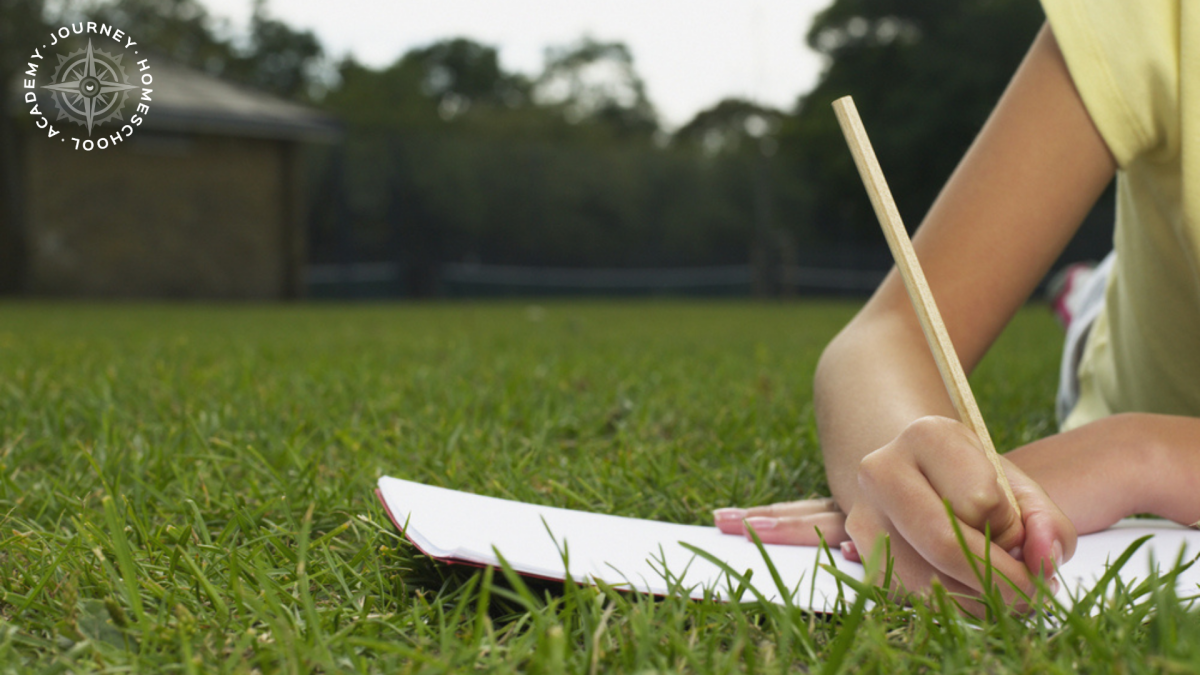
Step 6
Support Nesting Birds with Food and Water
Food and water make a big difference during breeding season:
- Feeding birds safely – Keep feeders away from nesting boxes so parents do not feel overwhelmed.
-
- 🪶For guidance, see Bird Feeders Homeschool Guide.
- Providing clean water – Use shallow dishes, clay saucers, or a simple drip system.
- 🪶Learn more at Providing Water for Birds!
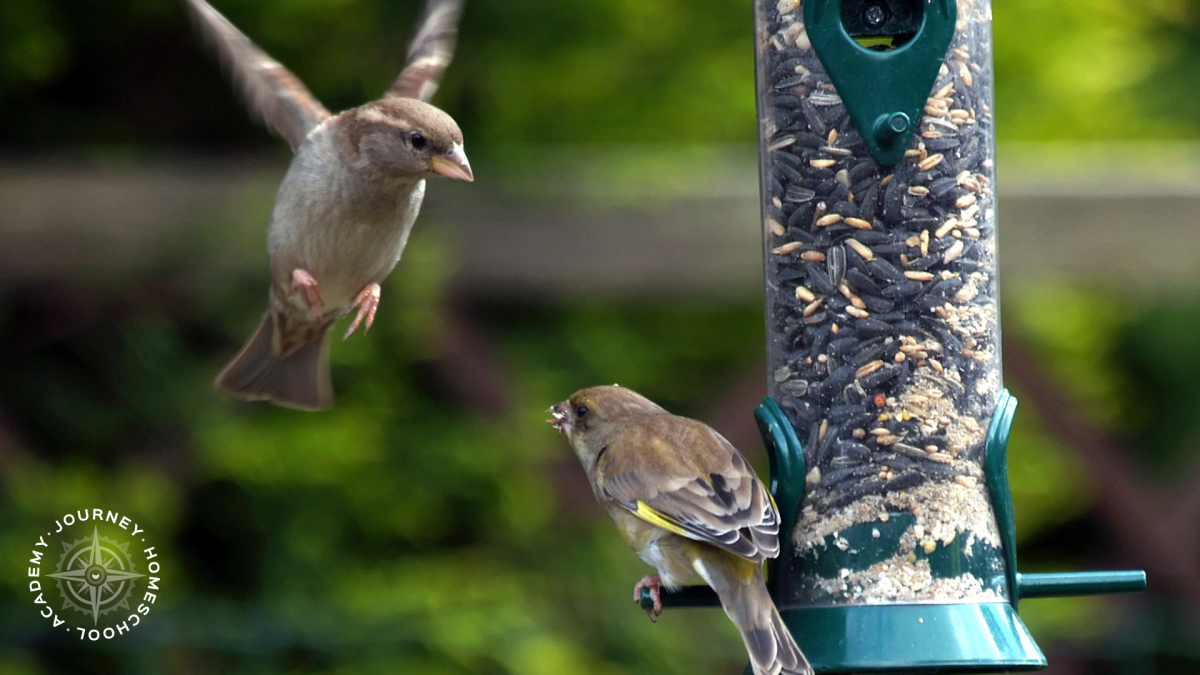
Step 7
Extend the Learning All Season
Here are ways to stretch your bird nesting homeschool project into a full season of science:
- Track nesting success – Kids can note whether the nest was used, how many chicks fledged, and what materials the birds chose.
- Compare nest types – Your yard may attract cup nests, cavity nests, or even ground nests. This is a great comparison study.
- Run simple experiments – Try asking:
- Which materials do birds choose first
- Does the weather affect building speed
- Do different species prefer different nesting boxes
These observations help kids think like budding scientists.

Faith and Wonder: Noticing God’s Hand in Creation
Once your kids have watched birds build, protect, and raise their babies, it becomes very natural to talk about the care and order we see in creation. You do not have to force spiritual lessons. They grow organically from all the watching and wondering.
This is the moment when you can talk about how beautifully designed nature is and how God cares for every living thing. When your children finally see a baby bird peeking out of the nest for the first time, those conversations happen on their own.
It is one of the sweetest parts of homeschooling.
Ready for More Bird Adventures in Your Homeschool?
Explore JHA’s World of Birds curriculum!
If your kids are already excited about backyard birds, you can take their learning even further with our World of Birds course. It is full of hands-on activities, simple explanations, and engaging video lessons that help your children understand birds in a whole new way.
And here is the fun part. The course will be ready in January, which makes it perfect for planning a fresh start to your homeschool year.
🪺Check out the details here: https://journeyhomeschoolacademy.com/world-of-birds/
This nesting project is a wonderful beginning. World of Birds will help your kids go deeper and truly appreciate the incredible variety and design of the birds around them!
